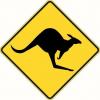Hi all,
I'm making very slow progress on a NBSS-style tool chest for under my bench. I just noticed that it was exactly a year ago that I finished the rough milling of the lumber. Once I have more to show, I'll post a build thread.
I purchased a LV Combo plane a bit over a year ago for the project, in part because I wanted to try dados by hand, and in part to upgrade my grooving plane. I fondly call it "The 17" because it has 17 adjustment knobs and it has proven to be a definite improvement over my vintage Record 043.
This weekend, I final had a chance to work on figuring out dados with the plane. I did learn several things and discovered a potential issue with my copy of the plane. My spotty results were a combination of learning a new technique, tuning a new (complex) tool and a set screw that isn't quite up to snuff(?).
Many, many thanks to Derek for his fine tutorial here:
http://www.inthewoodshop.com/ToolRev...ane-dados.html
Go read that and you'll know what to do. Read on for tips on what to avoid...
First, Derek is spot-on in noting that the nickers are critical. I tuned mine before starting, rounding the tips and getting them sharp. However, I also seem to have nickers that are soft and they rolled after the six short dados I cut (see below). Fortunately I have a friend with a metal shop and won't have to fly blind for my first adventure in tempering.
Second, Derek is also correct that getting everything dialed is tricky, especially the first time (or first several times).
Third, dados are hard! Most of my issues I chalk up to user error in set up and technique. I did hit the sweet spot a couple times and could feel the magic, but it was fleeting. Lesson: while I did do a several practice dados, more practice was in order when trying a new trick.
Lastly, at least some of my poor results stemmed from the blade moving, despite much checking of adjustments. Eventually I noticed that when the skates are perfectly aligned to the outside edge of the blade on both sides (so the nickers are also aligned), the lateral set screw does not quite engage the blade on my specimen. Only about 0.5 or 1 mm short, but enough that at least once it shifted and tore into the side wall of the dado, with nasty looking results. Anyone have thoughts on this? Would be straightforward to file down the casting so the screw could engage, but...
Fortunately, the nappy sidewalls will be inside the carcass, so I'm not too worked up about it, but am keen to get it all dialed in. I found the process quick once I got rolling and oh so much nicer than the table saw. I did manage 1 out 6 that wasn't totally embarrassing.
And again, thanks to Derek for his tutorial as I'm much further along than I would have been!
Thanks all,
Chris
Nicker afterwards
Attachment 404946
Batten set up. Quick to set accurately with a combo square. Did one side then the other for each dado off the top as a reference side.
Attachment 404947
Avert your eyes if you have a queasy stomach...here's the carnage:
Attachment 404948
And finally a photo showing the gap between the lateral set screw and the blade:
Attachment 404949





 Reply With Quote
Reply With Quote





